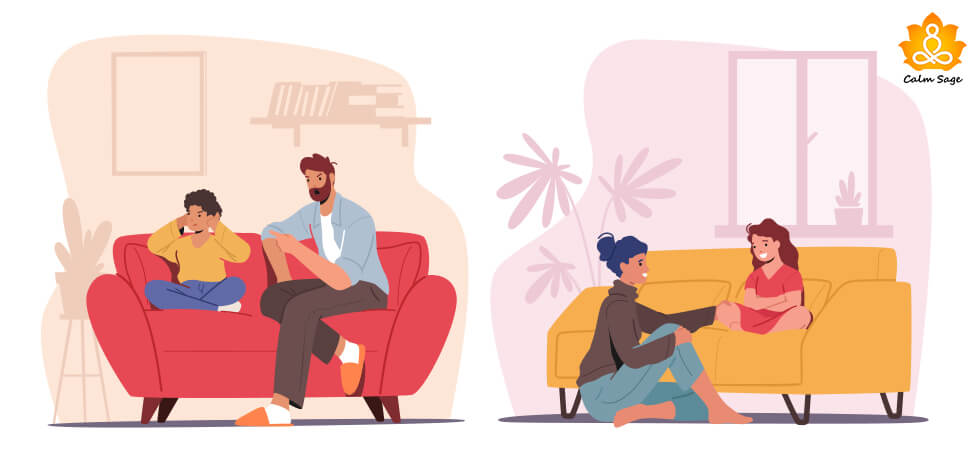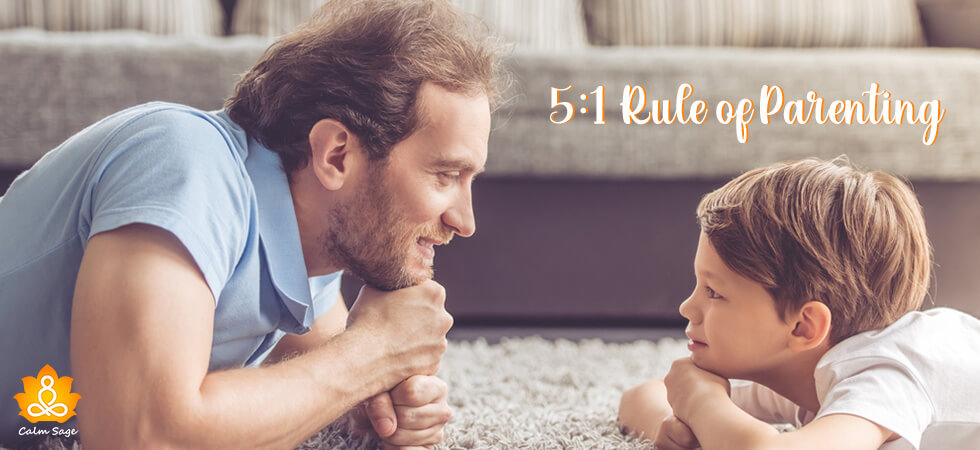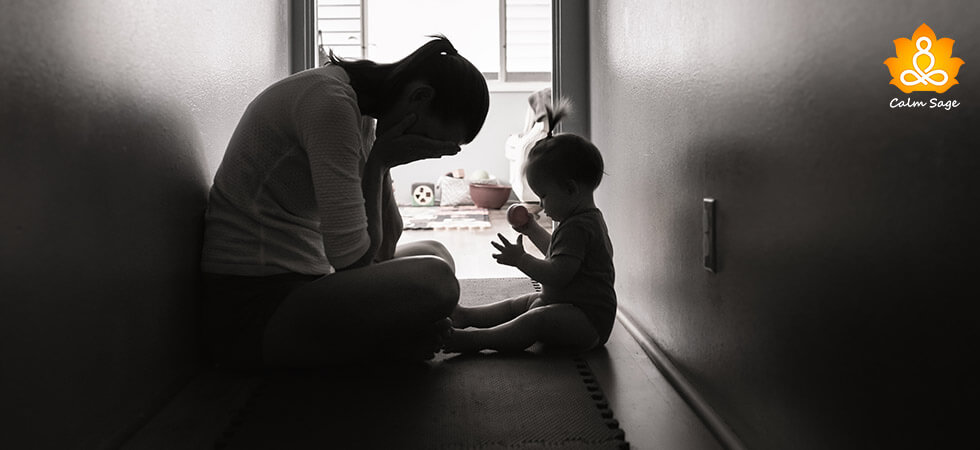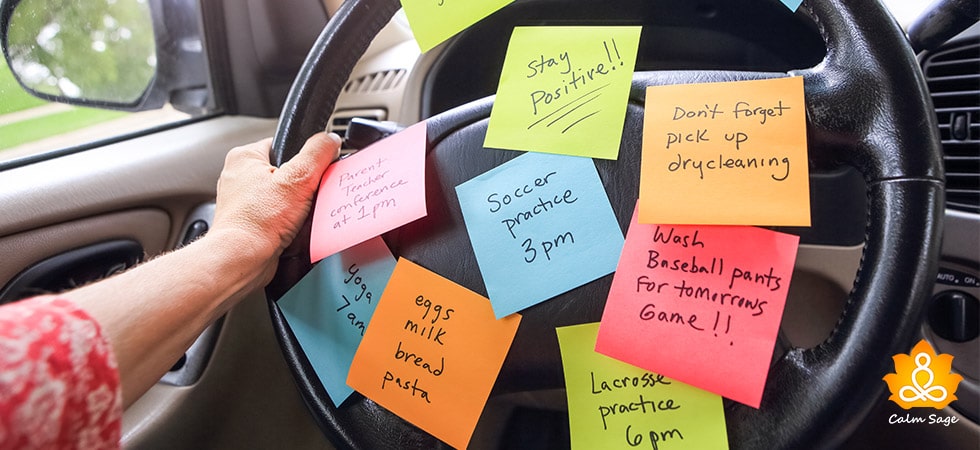Parallel Parenting: Creating The Right Plan For Raising Your Children After Divorce!

Parallel Parenting is When You Want to Have Minimum Interaction with your Partner and Parent Independently of your children. This Way You can be detach from partner and at the same time provide healthy environment to your children.
Some situations or consequences rip apart the marriage, but one thing that stays connected throughout life is children. When children are involved in the marriage, you cannot just simply part ways, you have to mutually determine what works for you all. Along with this, you also have to put in efforts mutually to protect the mental health of kids throughout the process.
Parallel parenting is a positive parenting model developed for divorced or separated couples who find to get along but wish to be involved in parenting their children.
In this blog, let us find out what parallel parenting is and how to create a parallel parenting plan for raising your children the right way!
List of Contents
- Introduction to Parallel Parenting
- When to Choose Parallel Parenting?
- Working of Parallel Parenting
- Difference between Parallel Parenting & Co-Parenting
- Advantages of Parallel Parenting
- Disadvantages of Parallel Parenting
- What to Keep in Mind While Creating Parallel Parenting Plan:
- How to Create a Parallel Parenting Plan:
- Tips for Successful Parallel Parenting
- Key Takeaway: Making Parallel Parenting Successful for You
Introduction to Parallel Parenting
Parallel parenting is all about spending time and taking care of your children independently. This model is for separated or divorced parents to minimize communication and divide responsibilities so that both parents can attempt to protect and raise their children positively.
The best part about parallel parenting is the child gets the opportunity to spend time with both parents with fewer chances of domestic conflict. The parents need to collaborate together to divide responsibilities. This ensures limited communication between the parents; contact can only be limited to discussing education, career, safety, health, and other needs.
The communication between the parents is short and to the point to avoid conflicts and digging over the past. Since communication is necessary for parenting, all decisions can be documented through texts, apps, or emails.
If you’re going through a divorce or thinking about separation, you might be thinking…
- Should you Adopt Co-parenting or Parallel Parenting?
- Will Parallel parenting Provide healthy Environment to Child?
- When to choose parallel parenting?
When to Choose Parallel Parenting?
Choosing parallel parenting totally depends on your relationship. As Jordan Hardgrave, a certified life coach Said that parallel parenting is suggested for high-conflict divorce. History of violence (emotional or physical) or dealing with a narcissistic parent are one of the best examples where parallel parenting can be suggested.
If You Decide to Coparent with narcissists, Their Tendency to Bring down Other Parent Will Come up. This Situation can Affect You and Your Child Mentally.
Working of Parallel Parenting
According to research, it is an arrangement to raise the child together with less or limited communication, each parent gets custody or charge of the children according to their needs. In case of abuse, violence, or narcissism the custody goes to the non-abusive parent. This process depends on the nature and severity of the abuse. If the case goes severe, the non-abusive parent gets the sole custody, in such situations, parallel parenting is not advised.
The basic working of parallel work goes around limited communication. There are no joint celebrations, joint school meetings, joint parties, or doctor appointments. The things have to go parallel, and most importantly the other parent does not have a say on how the other partner manages the responsibilities as long the well-being of the children is protected.
Difference between Parallel Parenting & Co-Parenting
There are huge differences between parallel parenting and co-parenting, such as:
| Parallel Parenting | Co-Parenting |
|---|---|
| Model adopted after high-conflicted divorce | Model adopted after agreeable divorce |
| Focuses on parenting independently | Focuses on parenting together |
| Limited communication | Encourage Healthy Communicating |
| No collaboration, both parents fulfill the needs individually | Fulfill the needs of children equally |
| Responsibilities are divided based on abuse, narcissism, or violence | Responsibilities are taken mutually |
| Reduce the Amount of Conflict Between Both Parents | Encourage Stability by Shared Responsibilities |
| Limiting your child’s exposure to parental conflict | Encourage the child to have a positive relationship with both parents |
Advantages of Parallel Parenting
Parallel parenting is a co-parenting approach that is often used in situations where conflicts are often seen or where joint custody arrangements are not feasible. While it might seem like parallel parenting is not good for children of separated parents, there are some advantages of parallel parenting;
1. Reduces Conflicts: Parallel parenting reduces the interaction between high-conflict parents which can help reduce conflicts altogether. Meaning that the child can now be raised in a peaceful and stable environment.
2. Protects Children: When conflicts are reduced, it automatically protects the child from exposure to negative disputes and tensions. This can help bring a positive effect on the children’s well-being.
3. Defined Roles: With parallel parenting, each parent takes responsibility for specific areas of their child’s life. This can result in defined roles, which can, in turn, reduce ambiguity and conflict.
4. Set Boundaries: Parallel parenting can also help maintain appropriate boundaries between separated parents, allowing each parent to focus on the parent-child relationship without any interference from the other parent.
5. Stability and Flexibility: While it may not seem like it, but parallel parenting can afford the children stability and consistency. This approach to parenting can provide a more predictable routine. Parallel parenting also allows parents to make decisions within their own parenting time, providing flexibility.
6. Reduced Stress: Other kinds of co-parenting approaches can be stressful for parents and children. Parallel parenting reduces that stress as it minimizes the need for frequent interruptions and interactions.
Disadvantages of Parallel Parenting
While parallel parenting can be good for children, especially in high-conflict co-parenting situations, it also has some disadvantages. Let’s see some of the common disadvantages of parallel parenting;
1. Limited Communication: Parallel parenting does not require frequent communication and interaction between the parents and while this can reduce conflicts, it can also hinder the ability to collaborate on parenting decisions. This can often cause misinterpretation and miscommunication between parents as well.
2. Reduced Co-Parenting Flexibility: Parallel parenting involves strict boundaries and roles for each parent, which can limit co-parenting flexibility. This type of rigidity in parenting can not always be good for the children.
3. Lack of Conflict Resolution: Parallel parenting does not often offer conflict resolution or problem-solving between parents. In this case, issues that arise from co-parenting might go unresolved.
4. Low Emotional Support: In parallel parenting, the child may not always get the emotional support that comes from seeing parents cooperating and working together. This may cause issues in attachment styles and might cause the child to miss out on the united front that other co-parenting styles may provide.
5. Financial And Time Cost: Parallel parenting often uses intermediaries such as therapists or parenting coordinators. This interference may cause financial problems and can be time-consuming for working parents.
6. Long-Term Effects: While parallel parenting can be good for short-term co-parenting to reduce conflicts, it can be not a good choice for long-term co-parenting. This parenting approach can have long-term effects on the child’s emotional development.
What to Keep in Mind While Creating Parallel Parenting Plan:
Generally, a lawyer or child custody member suggests different parenting plans and they also help you create the right one. If parallel parenting is court-ordered or suggested by a lawyer, parents lose the right to co-parent together.
Parallel parenting is created after observing the following factors:
- Schedule of both parents
- Custodial exchanges
- Vacation and holiday schedules
- Decision-making in terms of schooling, medical situations, and other important factors
- Communication rules
- Boundary settings
- Presence of abuse or narcissism (severity, types, and other factors)
If you’re asked to create a plan or suggest a plan, you can take the reference of the above-mentioned factors to build an effective parallel parenting plan. Always remember that parallel parenting rules should be detailed and specific in terms of:
- Parenting time
- Specific exchange time
- Transportation modes
- Cancellation or make-up times
- Decision power
How to Create a Parallel Parenting Plan:
Step 1: Start preparing a plan by determining how you wish to split up the timings & days with the kids. Herein, you can also work on splitting vacations, holidays, birthdays, and other important days.
Step 2: To avoid confusion and disagreements in the future, mention specific start time and end time in front of the plan so that each partner can follow it religiously.
Step 3: Along with time and days, also mention the pick-up and drop-off locations so that commuting between the partners can be easy and equal for all. Also, mention the transportation type for safety purposes.
Step 4: In cases of cancellations or post-pones, discuss how you wish to handle cancellations mutually. Additionally, also mentions the terms and conditions for sudden plans.
Step 5: To keep disputes at a minimum level, ask the court to appoint a mediator so that they can work together in cases of conflict.
Tips for Successful Parallel Parenting
Successful parallel parenting needs careful planning, communication plans, and a strong focus on the child’s overall well-being and development. Here are some tips to help you make parallel parenting work;
1. Commit to your child’s best interests.
In parallel parenting, the child’s well-being is the top priority and you should try to make decisions based on your child’s best interests rather than personal conflicts or disagreements.
2. Follow the parenting plan.
Make sure you create a detailed parenting plan and follow it to the T. The plan should clearly outline each parent’s responsibilities, time, decision-making authority, etc. to avoid any disputes and tensions in the future.
3. Set boundaries.
Clearly define the boundaries between you and your co-parent. Each parent should respect the rules and routines set by the other parent, even if they differ. It’s a matter of your child’s development, not personal fights.
4. Be consistent with your parenting plan.
The idea of parallel parenting is to provide consistency to the child. So, maintain similar rules, routines, and expectations as much as you can to reduce confusion and stress for your child.
5. Do not talk negatively about your co-parent.
Especially in front of your child, avoid talking badly about the other parent. Try to encourage a supportive and positive environment for your child.
6. Respect parenting time.
Try to be punctual and respectful of each other’s parenting time. Do not make any last-minute changes that can disrupt the schedule without a good reason.
7. Seek professional help for conflict resolution.
You and your co-parent can consider speaking to a professional when conflicts arise in the relationship. During therapy, try to focus on resolving the conflict rather than engaging in arguments.
8. Seek social support.
Friends, family, and support groups can be a good choice for social support. Your support network can help you cope with the stress and challenges of parallel parenting.
9. Be flexible when needed.
While there are established boundaries in parallel parenting, you can always leave room for flexibility. There could be times when you might need to adjust your schedule because of your child’s needs, so be flexible and prioritize your child.
10. Regularly review your parenting plan and adjust.
Try to regularly update your parallel parenting plan and make adjustments as per the child’s needs or circumstances. This review can help make the parallel parenting plan stay effective and helpful for the child.
Key Takeaway: Making Parallel Parenting Successful for You
If you wish to succeed in parallel parenting, try the below-mentioned tips:
- Keep the communication as limited as possible, call only in emergencies.
- In case of abuse or narcissism, document everything.
- Whenever you communicate, make your points visible, so that the needs of children can be fulfilled
- Avoid doing things together
- In case of conflicts, connect with your lawyer or coordinator
I hope this blog helps you understand what parallel parenting is and how to create a successful parallel parenting plan for you. Comment down and share your views on the same. For more such content, connect with us on all social media platforms.
Thanks for reading!




















